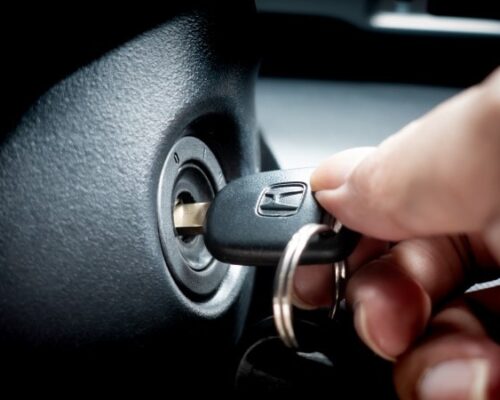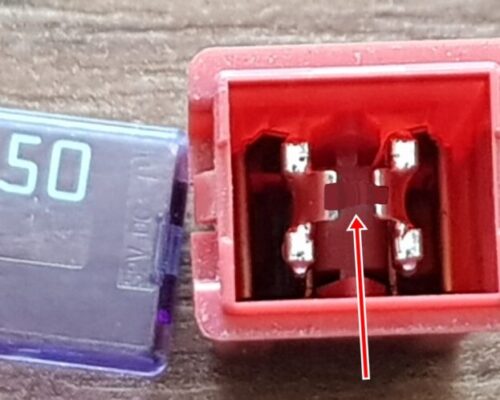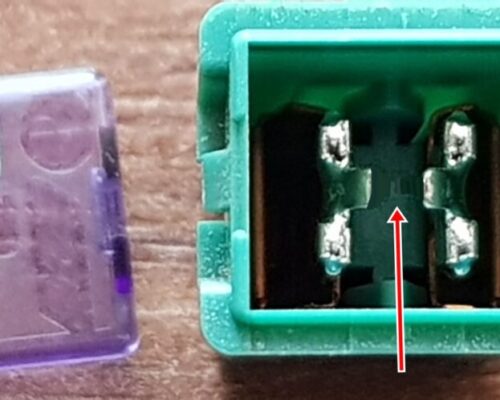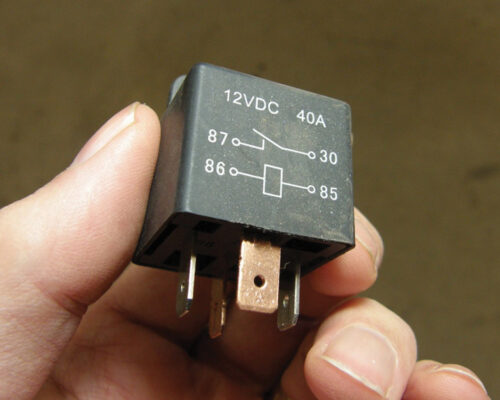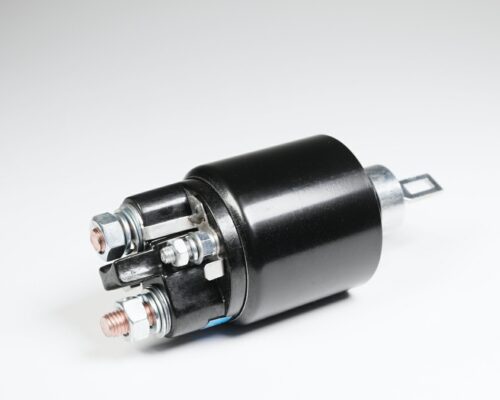
How to Find a Short Circuit in a Car?
Finding a short circuit in your car can be a daunting task, but there are some steps you can take to make the process easier. First, you’ll need to identify where the problem is occurring. If the electrical issue is causing your car to stall or lose power, it’s likely that the issue is in the engine compartment.
You’ll want to check all of the wiring and connections in this area first. If you’re still having trouble finding the source of the problem, you may need to consult a professional mechanic.
- Locate the fuse box in your car
- This is usually located under the dashboard on the driver’s side
- Open the fuse box and look for a blown fuse
- A blown fuse will have burnt or melted wires inside of it
- If you find a blown fuse, replace it with a new one of the same amperage rating
- Once you have replaced the blown fuse, start the car and see if the problem has been fixed
- If not, there may be another issue causing the problem such as a bad sensor or wiring issue
How to find a short in a modern car fast and easy (The correct way)
-How Do I Know If There is a Short Circuit in My Car
If you suspect that there may be a short circuit in your car, there are a few things you can do to check. First, use a voltmeter to test the voltage at each of the car’s electrical terminals. If the voltage is significantly lower than normal, this could indicate a short circuit.
Another way to check for a short circuit is to use an ammeter to measure the current flowing through the car’s electrical system. If the current is abnormally high, this could also be an indication of a short circuit. Finally, you can also listen for telltale signs of a short circuit such as sparks or crackling noises coming from the car’s electrical system.
If you notice any of these symptoms, it’s important to have your car checked by a qualified mechanic as soon as possible to avoid further damage.

Credit: drivinglife.net
How to Find a Short Circuit in a Car With a Multimeter
If your car isn’t starting, it may be due to a short circuit. But how can you tell? And how do you fix it?
Here’s how to find and fix a short circuit in your car using a multimeter.
First, check the battery. If the battery is dead, it may be due to a short circuit somewhere in the electrical system.
To test the battery, disconnect the negative terminal and touch the red probe of the multimeter to the positive terminal. If the reading is 12 volts or more, the battery is good. If it’s less than 12 volts, there may be a problem with the charging system or there may be an issue with one of the engine’s sensors that’s causing a draw on the battery.
Next, check all of the fuses in both fuse boxes under the hood and inside the car. If any of them are blown, replace them with new ones and see if that fixes the problem.
If neither of those solutions solve your problem, then it’s time to break out the multimeter and start testing for continuity.
First, disconnect negative terminal ofthe battery again so you don’t accidentally cause any sparks while testing live wires.
Start by testing each wire going fromthe fuse box to make sure there isn’t any broken wiring between them Box and any connections points along they way..
Once you’ve confirmed that all those wires are good, move on totesting each wire going from sensorsto their corresponding devices throughout vehicle.. Anywhere there shouldbe current flowing but isn’t could indicatea break in wire or faulty connection.
. By process elimination, eventuallyyou’ll hone in on which particular componentisn’t working correctlyand can take appropriate steps toreplace or repairit..
How to Find a Short in a Car With a Test Light
Most cars on the road today have 12 volt electrical systems. The battery provides the power and voltage to run the car’s electrical components, while the alternator keeps the battery charged. If there is a problem with the electrical system, it can often be traced back to a short circuit.
A short circuit is an electric current that flows through a conductor, such as a wire, without being intended to do so. This can happen if the conductor comes into contact with another conductor or if there is a break in the insulation surrounding the conductor. When a short circuit occurs, it can cause all sorts of problems for your car’s electrical system.
One way to tell if there is a short circuit somewhere in your car’s electrical system is to use a test light. A test light is simply a small bulb that you connect to one end of an electrical circuit. When you complete the circuit by touching the other end of the wire to ground (a metal part of your car), the bulb should light up.
If it doesn’t, then you know there is an open somewhere in that particular circuit.
To use a test light to find a short circuits in your car:
* Start with the battery disconnected and all of your car’s accessories turned off.
This will help prevent any damage to your electrical system while you are testing it.
* Connect one end of the test light lead to ground (a metal part of your car). You can usually find ground by touching bare metal on any parts of your engine block or chassis.
Do not use paint as it may not provide good enough contact for testing purposes.
* Once you have found ground, touch each component in turn with the other end of lead until Bulb lights up . These components include: batteries , starters , generators , distributors , voltage regulators , coils , solenoids , fuses , and switches .
As you touch each component, make sure that none of them are loose or corroded . Also check for any cracks or breaks in wires which could also cause shorts .
By following these steps, you should be able to locate any short circuits in your vehicle’s electrical system and fix them accordingly!
How to Fix a Short Circuit in a Car
A short circuit in your car can be a serious problem, and it’s important to know how to fix it. This type of electrical problem occurs when there is a break in the circuit, causing the current to stop flowing. This can happen due to a variety of reasons, such as a loose wire or a damaged component.
If you suspect that there is a short circuit in your car, the first thing you should do is check the fuses. If one of the fuses has blown, this may be the cause of the problem. You can replace the fuse with a new one and see if this fixes the issue.
If not, then it’s time to take a closer look at the wiring.
There are two main types of wiring in most cars – positive and negative. The positive wire carries electricity from the battery to various components, while the negative wire returns it back again.
If there is a break in either of these wires, it will cause a short circuit. To fix this type of problem, you will need to splice together the broken sections of wire using special connectors called crimp sleeves.
Once you have fixed the wiring, you should test everything out before driving your car again.
Start by turning on all of the lights and accessories to make sure they are working properly. Then try starting up your engine – if it starts without any issues then you have successfully fixed your short circuit!
How to Fix a Short to Ground in a Car
If you’re like most car owners, you probably don’t know a whole lot about your vehicle’s electrical system. But that doesn’t mean you can’t fix a short to ground in your car. With a little patience and some basic knowledge, you can get the job done quickly and easily.
Here’s what you need to do:
1. Locate the source of the problem. The first step is to figure out where the short is coming from.
This can be tricky, but it’s important to take your time and be methodical. Check all of the wiring in your car, looking for any bare wires or exposed metal that could be touching something it shouldn’t be.
2. Once you’ve found the source of the problem, isolate it by disconnecting any nearby wires or components.
This will help prevent further damage and make it easier to repair the short.
3. Use automotive tape or another type of insulation to cover any exposed metal on the affected wire or component. This will protect against future shorts and help ensure a safe repair job.
4. Splice in a new section of wire if necessary, using solderless connectors for an easy and reliable connection. Make sure all connections are secure before moving on to step 5.
5 .
Test everything out before putting everything back together . Once you’ve repaired the short, it’s important to test everything out to make sure it’s working properly . Reconnect all of the wires and components you disconnected in step 2 , turn on your car , and see if everything is functioning as it should .
If not , go back and double – check your work until you find the issue . 6 Put everything back together once you’re confident that the repair job was successful . That’s it ! You’ve now fixed a short to ground in your car . Be sure to keep an eye on any exposed wiring in case another short occurs in the future , but other than that , enjoy driving your newly electrically-safe vehicle !
How to Find a 12-Volt Short Circuit
We all know how frustrating it can be when our car won’t start and we don’t know why. One possible reason is a 12-volt short circuit. But how do you find one?
Here are some tips:
1. Check the battery first. If the battery is dead, it could be the cause of the short circuit.
Try jump starting the car to see if that solves the problem.
2. If the battery is fine, then check the alternator. An alternator that isn’t working properly can also cause a short circuit.
Again, try jump starting the car to see if that fixes the issue.
3. If neither the battery nor alternator seem to be the problem, then it’s time to check for a blown fuse or loose wire. Start by checking all of the fuses in your vehicle (including any spares).
If any are blown, replace them and see if that solves the problem. If not, then check for any loose wires under your hood and near your battery. Make sure they’re all secure and not touching anything they shouldn’t be touching—this could be causing a short circuit.
4 .
How to Find a Short in a Car Blown Fuse
If your car has a blown fuse, it can be difficult to figure out where the short is. However, there are a few things you can do to narrow down the search and find the source of the problem.
First, check all of the fuses in the car.
If one is blown, it’s likely that another nearby fuse is also blown. This can help you identify which area of the car may be affected by the short.
Next, take a look at any wiring that is exposed or damaged.
If you see any frayed or broken wires, these are likely culprits. You’ll want to repair or replace any damaged wiring as soon as possible.
Finally, if you have access to a voltmeter, you can use this tool to test each individual component in the circuit.
This can help you pinpoint exactly where the short is located.
If you’re having trouble finding a blown fuse or repairing damaged wiring, it’s best to consult with a professional mechanic. They will have the tools and experience needed to get your car back up and running safely.
Electrical Short in Car Symptoms
If you’re driving and your car suddenly shuts off, or the lights start flickering, it could be due to an electrical short. An electrical short in your car can be caused by a number of things, including loose wiring, damaged insulation, or a faulty component.
There are a few symptoms that can help you identify an electrical short in your car:
1. Flickering Lights: If your car’s headlights or interior lights start flickering, it could be due to an electrical problem. This is often caused by loose wiring or damaged insulation.
2. Dead Battery: A dead battery is one of the most common signs of an electrical issue in your car.
If your battery suddenly dies, it’s likely due to a problem with the alternator or another electrical component.
3. Engine Stalls: If your engine stalls unexpectedly, it could be caused by an electrical issue. This is often caused by loose wiring or a faulty component.
4. Burning Smell: If you smell burning while driving, it could be due to an electrical problem.
How to Check Short Circuit Without Multimeter
Do you know how to check for a short circuit without using a multimeter? It’s actually quite simple. All you need is a 12 volt test light and a helper.
First, disconnect the negative battery terminal. Then, have your helper touch one end of the test light to the positive battery terminal while you touch the other end of the test light to the suspect circuit. If the test light illuminates, then there is continuity in the circuit and no short exists.
If the test light does not illuminate, then there is an open somewhere in that circuit.
Conclusion
If your car has electrical problems, it may be due to a short circuit. To find a short circuit in a car, you’ll need to check the fuses, wiring harnesses, and grounding points. First, check all of the fuses in the car.
If any of them are blown, they may be the cause of the problem. Next, check the wiring harnesses for any loose or damaged wires. Finally, check the grounding points to make sure they’re all secure.
If you can’t find the source of the problem, take your car to a mechanic for further diagnosis.


